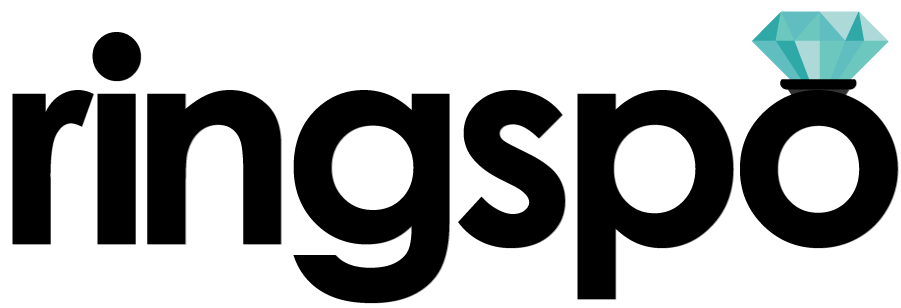How to sell Pomellato Jewelry
Make sure you get the best price when you resell your Pomellato Jewelry
Since bursting onto the scene in 1948, Pomellato has revolutionized the jewelry industry and changed global attitudes towards fine jewelry itself.
Pomellato pioneered the concept of fine jewelry for every-day, fashionable wear, and single-handedly introduced the world to the concept of pret-a-porter gems. Now, fifty years later, Pomalleto’s characteristically celebratory designs have grown to be revered both in Italy and across the world.
But tastes and circumstances change, and we don’t need to hold on to our Pomellato jewelry forever.
If you are looking to sell Pomellato jewelry and want to make sure that you get the fairest price for your piece, this blog will show you how.

The bottom line when selling your Pomellato:
The key to getting the best price when you are reselling your Pomellato jewelry is to work with someone who knows the true value of the jewelry and eliminate as many layers as possible between you and the buyer.
Auction houses, online marketplaces, etc act as middlemen and take a cut, reducing the amount they will pay you.
Our recommendation is Alon at The Diamond Oak – a fine jewelry specialist who will give you the best price possible, avoiding middlemen and fees. Get in touch with Alon here
Why Pomellato is so prized
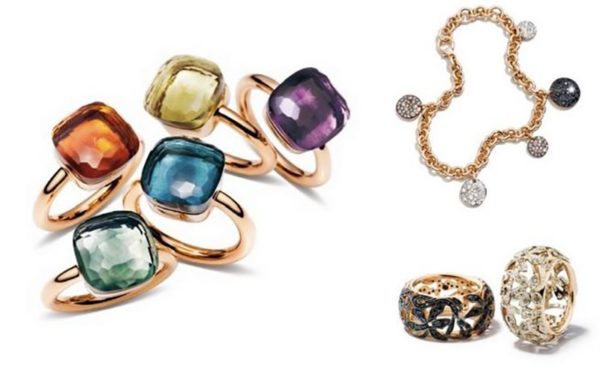
To understand why Pomellato jewelry is so sought after, it’s interesting to understand the rich history behind the brand.
Pino Rabolini had his world-changing idea in 1967: to create pret-a-porter fine jewelry, and Pomellato was born.
Nowadays wearing jewelry more casually as a fashion statement might seem like a no-brainer, but in previous decades it was very uncommon, as jewelry was seen mostly as a status symbol.
Rabolini shook the status quo by using large, semi-precious stones to create bold looks for Pomellato, crafting wearable and accessible designs for contemporary women.

When interviewed about his inspiration, Rabolini stated, “I grew up in an era when the terms of fashion were haute couture—garments for divas and princesses—and the Italian word ‘confezione’ – clothing for everyone else. Then the term prêt-à-porter, or “ready to wear,” started to circulate and it intrigued me, because it offered insight into a surprising focus on style, quality, and elegance.”

Rabolini came from a family of goldsmiths, which allowed him to develop his idea of pairing gold settings and semi-precious gems to achieve stylish yet affordable pieces. This affordability grew the Pomellato brand, quickly becoming a luxury staple for Italian women before expanding across the globe.

Pomellato now serves as a vocal proponent for moving the jewelry industry towards a more eco-conscious and sustainable future. They have proudly achieved 100% responsible gold purchasing and continue to invest heavily in the traceability of colored stones and diamonds, while also exploring use of new materials and recycling solutions.
The Pomellato brand continues to remain synonymous with innovation, accessibility, and female empowerment. Acknowledging their groundbreaking legacy, Pomellato crafts pieces to ensure that jewelry lovers of all kinds are able to experience a taste of the brand, from high jewelry pieces such as the Arabesque Earrings below, to the more attainable ones such as the Nudo Deep Blue Ring, that still bear that impeccable Pomellato craftsmanship.

Pomellato Arabesque Earrings

Pomellato Nudo Deep Blue ring

Pomellato Chain Bracelet
What type of Pomellato jewelry can be sold?
Over its prolific history, Pomellato has produced a variety of types and styles of jewelry, each of which are still in high demand. If you’re looking to sell your Pomellato jewelry, then that’s good news for you – no matter what piece you may own, you will be able to find an interested buyer.
One thing to know though, is that the price you receive for your Pomellato jewelry when selling can be dependent on a couple of factors:
- Condition
- Provenance
Condition
All jewelry bears a history; no matter how it is cared for, if it’s worn at all, it will necessarily pick up some nicks and scratches.
Some commonly used terms to describe pre-owned jewelry are as follows:
- mint condition
- excellent condition
- good condition
- fair condition
- poor condition
When selling to a jewelry professional, it is likely that they will be intending to move the piece on by improving its condition and reselling it to a new owner. That said, the better the condition of the piece, the less work will be required of the buyer; therefore, pieces in better condition should command a higher price.
Provenance
Provenance can be defined as the history of ownership of a valued object or work of art or literature.
There are multiple reasons why it is important to be able to demonstrate the provenance of your Pomellato jewelry:
- It proves ownership over the piece, and that it is therefore legally yours to sell.
- It proves that the piece is genuine.
Possessing things such as your receipt, the box, jewelry bag, and other appropriate accoutrements that were included with your Pomalleto jewelry purchase will raise your buyer’s confidence in the provenance of the piece:

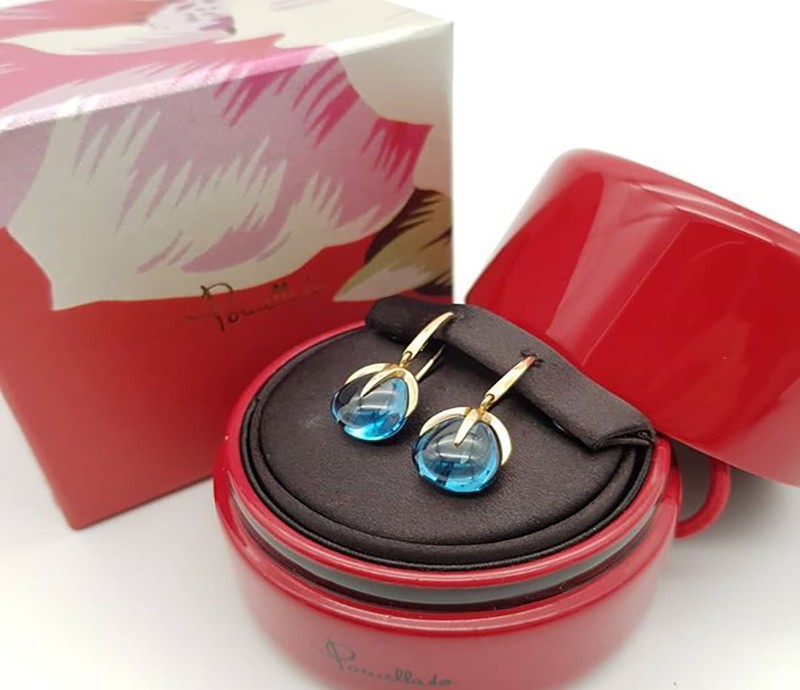
Your options when selling your Pomellato jewelry
Once you’ve made the decision to sell, it’s understandable that you would want to get the best price possible for your Pomellato jewelry.
But it can be hard to know where to start.
In this section, we’ll look at the different options for where you can sell, and some things to take into consideration when deciding which is the best fit for you.

When selling your Pomellato jewelry, there are a few things to consider:
- What you are selling
- What is more important for you – price or speed of sale
- How much you value certainty
Understanding what your Pomellato jewelry is worth
One of the first things to understand is how much your jewelry is likely to be worth when selling it.
You may have a jewelry appraisal stored away with a value attached to it, which you have used for insurance purposes. While there are a few types of appraisals, it’s likely that yours will list the price that it would cost to replace the item with a new, or equivalent, piece.
Unfortunately, the value on your appraisal isn’t the same as the amount that someone would actually be willing to buy the jewelry from you for. The reason being, that anyone who would buy it from you now, would then be looking to sell it as ‘used’ for lower than the price of a ‘new’ replacement item and still make a profit.
The amount that someone is actually willing to pay for an item is known as the ‘fair market value’.

Determining the fair market value of something can be tricky, and many people look online to try and understand how much their Pomellato jewelry might now be going for.
One of the most famous sites for high quality vintage jewelry is 1stDibs.com, which specializes in selling from professional jewelry dealers to the public.
Many jewelry lovers enjoy browsing the wares on 1stDibs and it’s not uncommon to assume that if you see a comparable piece of jewelry being sold on there, then you may be able to receive a similar price for your own piece.
Unfortunately, however, the prices on 1stDibs are not a good guide on how much you are likely to get when you sell your jewelry, as the prices advertised are the prices that a jewelry dealer is selling them for, including making a profit once 1stDibs’ fees and all their other costs have been taken out.
However, it can be useful to get a ballpark figure of how much a jeweller may be willing to pay for your item.
For example, this Capri Turquoise and Rubies Ring may be listed for $4,600:

However, as with buying many vintage pieces, prices aren’t fixed and dealers are usually open to negotiation.
Underneath the ‘Purchase’ button, you can see there is a ‘make an offer’ button, which says that sellers are most likely to accept offers of 5% – 20% off the $4,600 price:

A 5% to 20% offer below the listed price is a $230 to $920 reduction on the original $4,600 price.
This reduces the amount that the jeweller is likely to receive for the ring to between $3,680 and $4,370
Then 1stDibs’ commission fee needs to be taken into account. This is a 15% commission fee plus a 3% processing cost, which would reduce the price that the seller actually receives to between $3,017 – $3,583.
Most jewellers will look to buy jewelry for around half of what they are sure they can sell it for, so in order for this to make sense for the dealer, it’s likely that they would aim to buy a ring like this for around half of the $3,017-$3,583 figures.
This would mean that a jeweller is likely to pay around $1,508-$1,791 for this particular ring.
If you have an extremely high end or one-off piece, consider an auction house.
While Pomellato tends to skew towards the more affordable, they have produced a wide range over the company’s meteoric rise, from high jewelry pieces containing one-of-a-kind gems, to more attainable rings and necklaces which can be purchased in their boutiques worldwide.
If you are selling an extremely rare or high-end piece, then it may make sense to use an auction house, as they can result in a higher price achieved due to the competitive nature of several bidders pushing the price up.
Two of the most well-known auction houses for jewelry are Sotheby’s and Christies:

When considering whether a traditional auction house is the right choice for you, it’s important to understand that the final ‘hammer price’ you see for past sales is not the amount that the sellers actually received.
- Sotheby’s commission for the seller is typically 20% of the final sale price
- Christies commission for a seller is also 17% of the final sale price, with an additional 2% ‘performance commission fee’ if it goes over the agreed ‘high estimate
These high-end auction houses also charge the sellers an additional 10-15% of the final sales price, which can mean that they are less willing to bid high amounts.
The other thing to consider with auction houses is the length of time that these organisations will take to sell your item.
As the snippet from an email below shows, it can take around a month for them to assess the value of an item.

Once the item has been accepted, you would then have to wait for a suitable auction to be held, which could be an additional three months, depending on when the next suitable auction is due to be held.
The other potential wait could be if you list your item and it doesn’t reach your desired price, in which case it will be passed in and returned to you. This uncertainty can put off some buyers who are more comfortable with a fixed price.
For the reasons listed above, if you are keen to sell your item reasonably quickly, high end auction houses are unlikely to be able to help.
But, if you are willing to wait, you have an item that fits their high requirements and you are happy with the commission % that the auction houses charge then they could be the best solution to get a great price if your item is subject to a bidding war that drives the price up.
Selling using online auction sites
There are two types of online auction websites that deal with high quality jewellery:
- Auction sites that sell to consumers e.g. 1stDibs.com
- Auction sites that buy from consumers e.g. worthy.com
Pomellato and Worthy.com
Worthy.com is a marketplace which works the opposite way to 1st Dibs.
Instead of connecting professional jewelry traders to customers, it connects ordinary people who are looking to sell jewelry with a network of nearly 1,000 jewelry traders who can bid on their items.
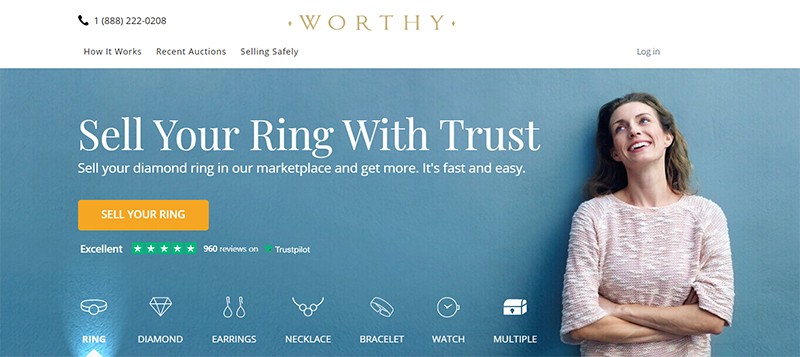
Worthy is much faster than selling through a traditional auction and it does put you in contact with a range of jewelry buyers who could bid the price of your item up, if they like it.
The cost to access these buyers is Worthy’s ‘success fee’ commission, which is only payable on the completion of the auction.
These fees are:
- Up to $5,000 = 18%
- 5,001 – 15,000 = 14%
- 15,001 – 30,000 = 12%
- 30,000 and above = 10%
Worthy can be a good option as it means that your jewelry can get out in front of as many people as possible, who will then bid against each other to increase the possible price you receive.
Pomellato and IdonowIdon’t.com
I do now I don’t operates on a similar business model to Worthy.com, but has a slew of bad reviews on Trustpilot with reports of them not paying sellers for the goods that have been sold.
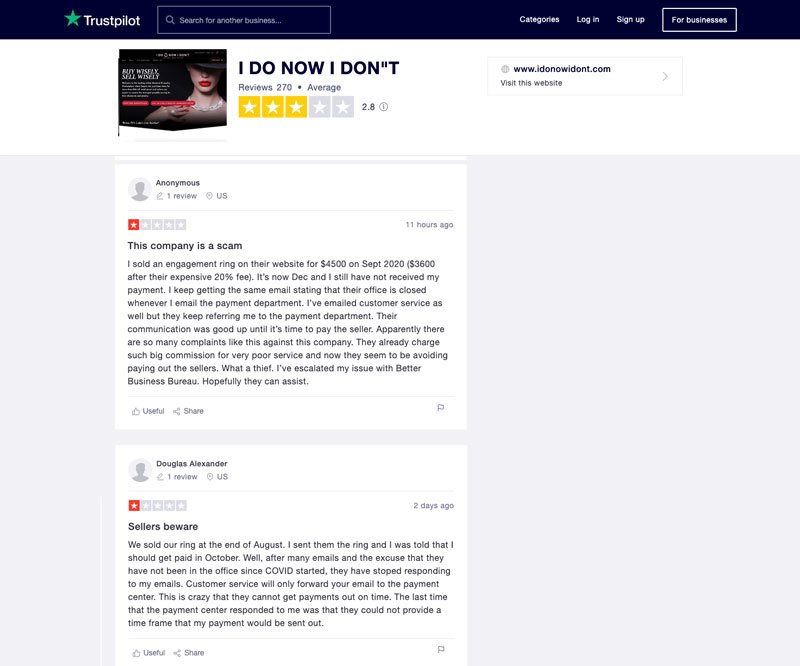
As a result I would not recommend that you use their service.
Selling Pomellato direct to a jewelry dealer
The best way to get the most money for your Pomellato jewelry is to eliminate as many layers between you and the person buying it as possible.
In essence, to talk directly to the type of people who are buying through worthy.com, but without having to pay Worthy the commission and reduce the amount you make.
Our recommendation is The Diamond Oak.
The Diamond Oak is a family run business with multiple generations in the jewelry industry, based out of the Diamond District in New York.

Best of all, working with Alon you will get a fair price extremely quickly, instead of having to wait for an auction to run its course and then pay the fees out of the sales price. Alon’s process is:
- Complete a form on The Diamond Oak’s website
- Alon will get back to you with an estimate, usually the next business day
- If you like the estimate, Alon will provide a pre-paid and insured shipping label
- Once he’s received it, Alon will check that all looks OK, and then pay straight away.

Alon of The Diamond Oak
If you have Pomellato jewelry that you are looking to sell, Alon at The Diamond Oak will guide you through the process and ensure that you receive the very best price possible – just click through and fill out the form and he’ll get straight back to you with an offer for you to consider.
Even if you don’t end up working with him, you will receive a guide price back extremely quickly, which can then help you understand whether you are getting a better deal through other avenues.
